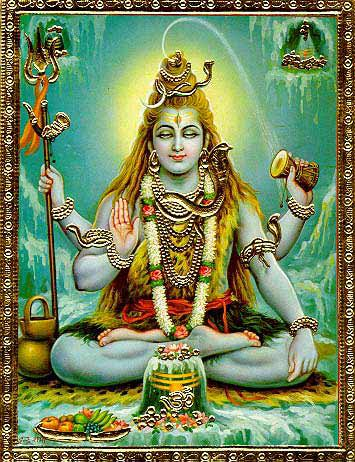Tag Archives: yoga
10 Yoga Styles For Every Body And Every Mood
“There was a time when I didn’t really think much of yoga. As a runner, I’m used to sweating it out, lots of intense movement, burning tons of energy, and actually going places. Yoga seemed like something for those who wanted to relax (never mind that I clearly needed to relax) and stretch. It didn’t seem like something I had time for. And I was sure I’d get bored with holding poses, standing still, breathing deeply.
But then I decided to test out a yoga class at my local gym. And it… was pretty intense. The next day I was sore, but felt relaxed and invigorated. And I could hardly wait to go back and give the Vinyasa class another try.
What I hadn’t realized before was that yoga encompasses a wide variety of styles and methods of practice, each of which is based on the foundation of breathing, balance, mindfulness, and spirituality. And depending on what the needs of your body and mind are – whether it be more meditative and restorative, or more physically demanding – there’s probably a method of yoga practice that is a good fit for you.
The tricky part is knowing which style that is. Here’s a quick yoga style guide to get you on the right track and to the right class.”
Click here to learn about ten different styles of yoga.
Which style do practice?
Incorporate Yoga Everyday Through Aparigraha
Aparigraha and Nonattachment in Everyday Life
Aparihraha is part of yogic philosophy. For an introduction to yoga philosophy, it is important to learn about the yamas and niyamas.
Aparigraha and Nonattachment Overview
Aparigraha is one of the yamas ~ the definition is nonattachment. Feelings, thoughts, emotions, and possessions are all impermanent. This post will focus on nonattachment to material possessions.
What we own ends up owning us. You can see this every day in your own life and the life of your friends and family.
If you’re a recent college graduate, adhering to the Aparigraha principle will give you freedom from the debt and obligations that shackle your friends and perhaps your parents. If you follow the path that American society dictates, you might find yourself trapped in a mountain of debt and useless possessions.
Possessions end up owning you, not the other way around.
Shackles Holding Us Back
I know so many people who would like to travel and live an extraordinary life but they’ve imprisoned themselves with debt by conforming to societal norms. Society tells us that we need to go to a great college and get a great job and then buy a great car and a great home. And then buy a bunch of great stuff to fill up the home. Is this really necessary?
I’ve fallen into the possession and attachment trap, what can I do?
Car payment? Student loan debt? Credit card debt? Mortgage? Garage full of useless items? Closet full of clothing you don’t wear?
The solution is to sell your crap, pay off your debt and change your mindset. On eBay and Amazon, one man’s trash is another man’s treasure. There will likely be buyers. If not, give it away. Giving is one of the most gratifying feelings in the world. If you need additional incentive, consider the tax credit offered to those who donate used items.
There was a study done that showed that true to the Pareto Principle, Americans wear 20% of their clothing 80% of the time. Look in your closet. There is probably numerous pieces of clothing that you haven’t worn in years. Get rid of them. Getting rid of physical clutter has been proven to rid your mind of mental clutter in the process.
By practicing yoga, meditating, reading and studying the great teachers, one will soon realize that the feeling we get from accumulating material possessions is a hopeless, fleeting pleasure.
Attachment and Making Consumer Purchases
Think of a recent time you purchased an article of clothing. You really liked it at first, right? But as time went on, you probably became accustomed to the piece of clothing and your affinity for it faded. You either lost it or it sits idle in your closet. Before you buy, realize that the good feeling you get from purchasing is impermanent. The purchase is probably unnecessary. This realization will help prevent the buildup of useless crap.
Why is it this way in America?
If we grew up in Japan, our attitude towards saving would likely be completely different. America is a debt driven society where consumers are encouraged to spend because it stimulates the economy in the short run. The average American ends up with mountains of high interest credit card debt by buying things that we don’t need.
As a society, we’ve lost touch with what matters. It seems many Westerners are concerned with celebrities and gaining social kudos from peers. We’ll do anything to satisfy this craving. Moreover, we’re so addicted to technology that it has become difficult to sit in silence and observe what’s going on in our minds.
In our travels to Cambodia, we witnessed the complete opposite. The locals were so happy and they had so few material possessions.
Test to Determine your Level of Attachment
Next time you misplace your cell phone or computer or another valuable item, notice your reaction. Are you mad? Sad? If so, take a second and reflect. I often cringe when I drop my iPhone in “fear” that I had just shattered the screen. But isn’t it a bit ridiculous to let the status of a possession dictate your happiness? Let’s reduce this attachment to possessions and limit craving for items.
Conclusion on Aparigraha and Nonattachment
Some of us are always chasing…. chasing an impossible fleeting feeling of “happiness” that supposedly comes from accumulating material possessions. There are not enough material possessions in this world that will make you truly happy. This can only come from within.
Let’s strive to take the opposite approach to those on the hit American TV series Hoarders. Pursue your needs, not your desires and you’ll have more freedom in life. Be content with less.
“My barn has burned to the ground, now i can see the moon.” ~Japanese Proverb
Athletes and Yoga: NFL Player Raves About His Offseason Yoga Routine
Colts tight end Dwayne Allen is expected to have a big role in the offense this season, and he says yoga will keep him healthy through the wear and tear of 16 games.
Allen said he did yoga almost every day, all offseason long, and he feels the difference in his flexibility.
“Man, a ton of yoga,” Allen said. “I had probably over 100 classes of yoga and it’s helped out a ton. I feel more fluid in my routes, getting in and out of my stance. It’s definitely helped calm me down a little bit.”
Allen, a 2012 third-round pick who caught 45 passes as a rookie, did a lot of his yoga in extremely hot conditions. He said more players are starting to realize can prepare them for sweating through August practices.
“It’s something that’s getting around the league,” Allen said. “A lot of the guys hear about it initially, they hear hot yoga, ‘Woo too hot for me,’ and then they understand that it’s something that’s going to help their game.”
If Allen has a big year, more players may follow his lead and use yoga as the way to stay in shape.
I love reading about athletes who practice. Lebron, Dwayne Wade, Ray Lewis, Victor Cruz, and Novak Djokovic are just some of the superstar athletes who have yoga in their workout routine. As a former athlete myself, I think yoga prepares you for both winning and losing. It prepares you for being able to go into competition with a prepared, focus mind. There are so many reasons athletes can benefit from yoga, most notably to me, the “willpower to finish” and “loosening of the hips.” As your hips and body open up through the yoga practice (if practiced correctly) your body will practically be forcing you to become a more explosive athlete. There are almost no negatives from an athletic stand point to the practice outside of risk of injury.
I look forward to writing more in detail about the process of yoga and athletic competition as LP goes on.
What is Satya?
What is Satya?
In English, the Sanskrit word Satya is translated to mean “truth.” Satya is one of the Yamas from the Yamas and Niyamas that Patanjali passed down in Yoga Sutras (arguably the most important yogic text).
The Yamas and Niyamas are the first two limbs of Patanjali’s Yoga Sutras. The Yamas and Niyamas can be best simplified as ten guidelines to purifying life and becoming a better person.
What does truth or Satya mean in the context of the Yamas and Niyamas?
Satya and Truth
Satya is honesty in all facets of your life. Honest behavior with honest thoughts and honest intentions. Satya will help guide us to true speech.
Satya and Ego
Satya is an ego reducer. When you are living by the Yama of Satya you will not lie for social gain or social kudos.
While using Satya, we have to be mindful of the first Yama, Ahimsa, or non-violence. Ahimsa tells us that it is not always desirable to speak the truth on all occasions, for it could harm someone unnecessarily. We consider what we say, how we say it, and in what way it could affect others. If speaking the truth has negative consequences for another, then it is better to say nothing.
Why Do People Lie?
Rory taught us that if we lie, we are lying because we cannot be true with ourselves. We want ourselves to look better, feel better, and create our own virtual reality. Satya tells us that we need to ask ourselves why we are we lying. Do we have an ego that wants to be amassed with crap and be congratulated or do we want to be free and truthful? Rory said if we lie, we are lying straight to God. Our karma would be affected.
Conclusion
Satya, the Yamas and Niyamas, and yoga guide us to freedom…. to mental emancipation.
The reality is the truth is not always easy to face. Sometimes, the truths that we most need to recognize are the very same terrifying and painful truths that we are subconsciously working to ignore.
Acting in truth can require incredible courage and faith, but, from practicing Satya, I know that it can change our lives. Family will trust you, friends will trust you, and strangers will trust you. In the Yoga Sutras of Patanjali it is written, “When one is firmly established in speaking truth, the fruits of action become subservient to him.”
How do you practice Satya and Truth?
What Are the Yamas and Niyamas?
What Are the Yamas and Niyamas?
When Brian and I first studied yoga extensively, we were fascinated by the origins and composition of the yamas and niyamas. There are books on the topic and one could study this for a lifetime. Here is a brief overview of what I learned from Rory Trollen combined with what I have learned in other lectures, seminars, and books.
The yamas and niyamas are the first two limbs of Patanjali’s Yoga Sutras. The yamas and niyamas can be seen as 10 Guidelines to purifying life and becoming a better person. The distinction between the word guideline and commandment is important. The word commandment is generally used to strike fear whereas a guideline is your spiritual ally helping you along the path.
If you are a yogi, then you are a yogi 24 hours a day, on and off the mat.
There are yogis who say that they have been to a certain part of consciousness so they know for a fact that if you steal, kill, use drugs, or cause harm to others, you lose karma.
On the other hand good deeds give you positive energies that can be translated into will power, the ability to heal injuries, and concentration for mediation. For every action, there is an equal and opposite reaction.
Eventually, advanced yogis will develop paranormal powers such as the ability to read minds and refine senses to such a perfection that you can be in two places at once.
In summary, there is enormous potential to do things to yourself and to others. The yamas and niyama serve as guidelines on how to act and to insure that the yogi does not use these powers in a negative way but instead uses their light to help others.
Asteya ~ Nonstealing
The Niyamas (internal observances):
Saucha ~ Purity
Santosha ~ Contentment
Ishvara Pranidhana ~ Why are you practicing yoga?
Brian and I will post a series of posts dedicated to each of the yamas and niyamas. Here’s a link to our first post in the series, dedicated to ahimsa.
Do you intend on living by the guidelines of the yamas and niyamas?
Is Yoga Spiritual? Is Yoga Religious?
Is Yoga Spiritual? Is Yoga Religious?
Is yoga spiritual? Is yoga religious? It depends on who’s practicing and who’s teaching.
Everyone’s practice is different. One person’s practice might be deeply spiritual or religious while another person’a practice is the opposite. In the West, we’re so quick to put titles and labels on things as if once we’ve labeled something we truly understand it.
What is Yoga?
In sanskrit, the word yoga means union. When we practice yoga, we are creating a union between the body, mind, and breath.
Yoga as a Science
Our teacher, Rory Trollen, described yoga as a science where you are the scientist and the lab. Rory explained there are simple, valid ways of finding out why one day you wake up feeling happy or sad.
Rory taught us that yoga does not require belief or faith, just practice.
In the last two or three decades, when yoga was introduced to the modern world, it was received with some skepticism. At first people thought that it was another religion. But in spite of this young people took up yoga and soon others began to notice its amazing effects. Then the psychologists, medical doctors, criminologists, and philosophers started making investigations and they were surprised to find that yoga is not a religion but a science. ~Swami Satyananda Saraswati
Yoga as a System
Patanjali said that, “Yoga is the cessation of the fluctuations of the mind.” This does not make the practice inherently religious, instead it is a system to live a more present, intentional life.
The system of yoga helps you cultivate inner awareness. For example, as you advance your practice, you’ll be able to more easily change your mental state. You’re less likely to be a slave to the 80,000 thoughts that the average human has each day.
Yoga as a Spiritual Practice
Some see yoga as a union between their being and the universe. If this is your interpretation, then perhaps yoga is a spiritual practice for you. Dr. Larry Dossey, a leader in the field of spirituality, describes spirituality as “a sense of connectedness with something greater than oneself.”
“Yoga is an aid to the practice of the basic spiritual truths in all religions. Yoga is for all, and is universal.” ~Swami Sivananda Saraswati
Do I need to be Hindu or Buddhist to Practice?
Although historical roots dating back 4,000 years show that yoga comes from Hinduism, one does not need to be Hindu to practice. There are similarities in yogic principles and the religions of Hinduism, Buddhism, Christianity, and Judaism although one need not prescribe to any particular religion in order to practice.
Yoga is not Hindu, it is not Mohammedan. Yoga is a pure science just like mathematics, physics or chemistry. Physics is not Christian, physics is not Buddhist. If Christians have discovered the laws of physics, then too physics is not Christian. It is just accidental that Christians have come to discover the laws of physics. But physics remains just a science. Yoga is a science—it is just an accident that Hindus discovered it. It is not Hindu. It is a pure mathematics of the inner being. So a Mohammedan can be a yogi, a Christian can be a yogi, a Jaina, a Buddhist can be a yogi.” ~Osho
Is yoga a sin?
If you’re so inclined, yoga can be interpreted as a merging between you and whatever God you believe in. So, in Judeo+Christian circles, how could becoming closer to God possibly be considered a sin?
If you want to become closer to your source or to God, yoga can help. Yoga helps remove external stimuli that serve as a detriment to truly connecting with ourselves, God, the Universe and other people.
Is yoga spiritual? Is yoga religious? My experience
Yoga enhances my religious practice and helps me to become a better person. As someone of Catholic faith, I’ve found that yoga has helped bring me closer to God, Jesus, the Universe, my family, my friends, and everything and everyone around me. If that makes my practice a religious practice in the eyes of others, then so be it.
Why the questions of “Is Yoga Spiritual? Is Yoga religious?” are relevant today
Mostly because of ignorance, fear and egos of people who do not understand yoga but feel threatened by it. Also, people who get tied up in their incessant need to label things.
Conclusion on yoga’s relationship to spirituality and religion
Yoga can be religious. Yoga can be secular. You don’t have to apply a title to your practice. Your practice is whatever you want it to be.
It is clear, however, that what separates yoga from gymnastics or stretching is the union. The union between mind, body, breath and something bigger whether it be God or the Universe.
With the rise of technological addictions, external stimuli overload, and advertisement bombardment in the West, it seems a connection to something bigger that ourselves is exactly what we need.
You do not need to be religious to practice yoga although you might find that yoga leads you down a spiritual path that you never considered possible.
In your practice, is yoga spiritual? Is yoga religious?
7/22 Quote: Albert Einstein
“I speak to everyone in the same way, whether he is the garbage man or the president of the university.”
~Albert Einstein
Relax that Ego
One of my favorite activities in the world is a post-work yoga practice. Yesterday I was blessed with the opportunity to enjoy a beautiful 55 minutes of Vinyasa yoga with my roommate, who decided to attend a class with me for the first time. Normally, as I lay down for Shavasana, a subdued elation comes over me as I relax and regroup. However, yesterday was different because I could not shake the feeling that I had gone about the day’s practice incorrectly.
For many of us who grew up playing competitive sports, the need to win was everything. This wasn’t an unusual feeling as our society is predicated on having a winner and a loser in all situations. In business, sports, and even social interactions, the drive to best someone else dictates many of the actions people take. The end result is an ego driven society, which is not what Lucid Practice is all about.
During Savasana I came to the realization that I had been comparing my own practice to those around me. I was looking around the room to see how I stacked up against everyone else’s Warrior 2 pose, instead of concentrating on my own breath. The need to “win” has stuck with me apparently, but instead of being an issue, this awareness is a beautiful opportunity. Now I know what I have to work on, and I can’t wait to get back on the mat and find my own breath, without worrying about winning or losing.
Relax that ego.
Hakuna Matata
Credit to Kev Ollier for the photo
What is Ahimsa?
What is Ahimsa? How Can One Practice Ahimsa?
This post is all about answering the question, “What is Ahimsa?” In a previous post, we explained that Patanjali’s Yoga Sutras specified 8 limbs of yoga with the first limb being the yamas. Within the yamas, there are 5 different principles. The principle we will focus on today is Ahimsa.
Literal Translation of Ahimsa
The literal translation of the Sanksrit word Ahimsa is nonviolence. In other words: do not harm anything.
What is Ahimsa? Practicing Ahimsa Outwardly
The principle applies to physical harm and verbal harm of all creatures (yes, even insects.) As a former college football player, when people see me practicing “catch and release” with the smallest bugs and insects, their reactions are priceless. When I explain Ahimsa as the basis of my rationale, some laugh, some become curious, some say, “you’ve got to be kidding me,” and some even get angry (which is quite ironic.)
What is Ahimsa? Practicing Ahimsa Internally
Ahimsa also teaches us to be nonviolent in thought. In fact, if you even think about punching someone in the face, it’s just as bad as doing it.
The practice of Ahimsa teaches us to be non+violent internally. Avoid beating yourself up on the inside. For example, if you’re meditating and find your mind wandering towards the past or the future, do you curse yourself and get angry for straying from your practice? Or do you practice Ahimsa and patiently guide your mind back to the present moment?
Examples of Ahimsa in Our Lives
How many times have you heard someone belittle someone else or themselves? “Oh, I’m such a idiot,” is a phrase that’s used too commonly. Ahimsa teaches us to not be so hard on ourselves.
A negative thought is a violent thought. People find it easy to speak negatively, it is the point of least resistance for them. In a previous post, we touched on how people belittle others behind their backs. The practice of Ahimsa tells us that it doesn’t have to be this way. There are attractive alternatives described in this post.
What is Ahimsa? Ahimsa During Asana
Ahimsa can also be seen as a guide in your Asana practice. Do you let your ego get in the way by getting frustrated when you can’t hold a certain arm balance? Or do you patiently accept where you’re at in your practice? Don’t push past your body’s limit, honor where your body is, avoid injury.
Perhaps you recently started practicing yoga and notice that you usually have a “good feeling” after Asana practice. If you want to carry that good feeling off of the mat, start by practicing Ahimsa.
Quotes about Ahimsa
“The yogi sees all beings in the Self and the Self in all beings and therefore opposes violence and loses all fear. The yogi is stern with himself when dealing with his own faults but gentle with the faults of others.” ~B.K.S Iyengar
“Practice of asanas without the backing of Yama and Niyama is mere acrobatics.” ~B.K.S Iyengar






